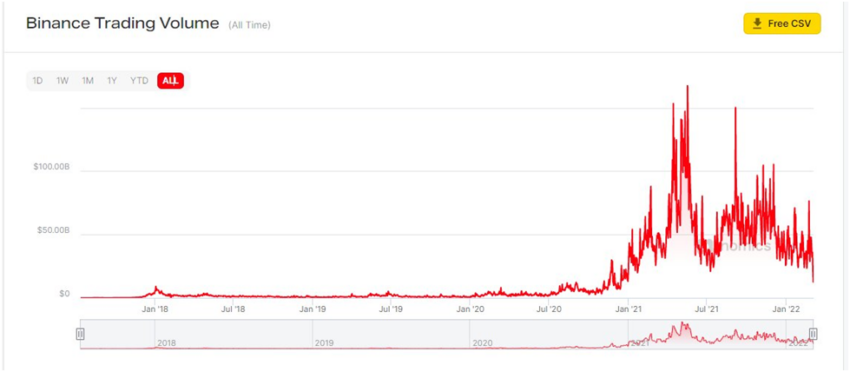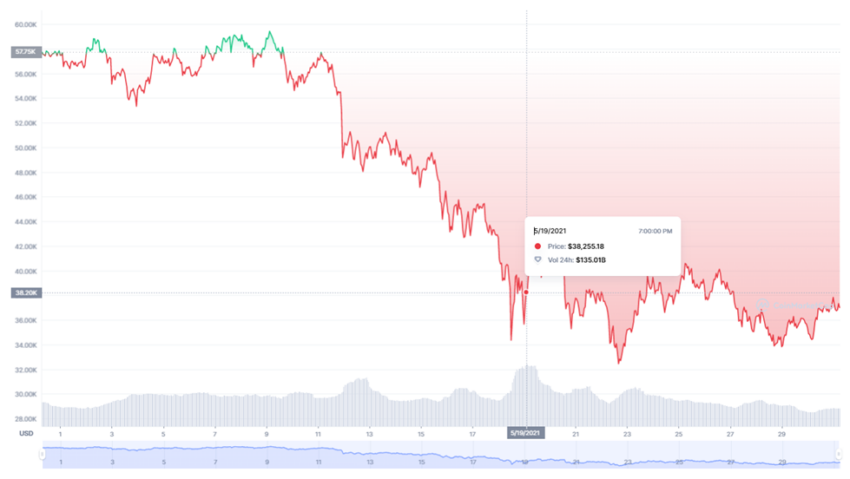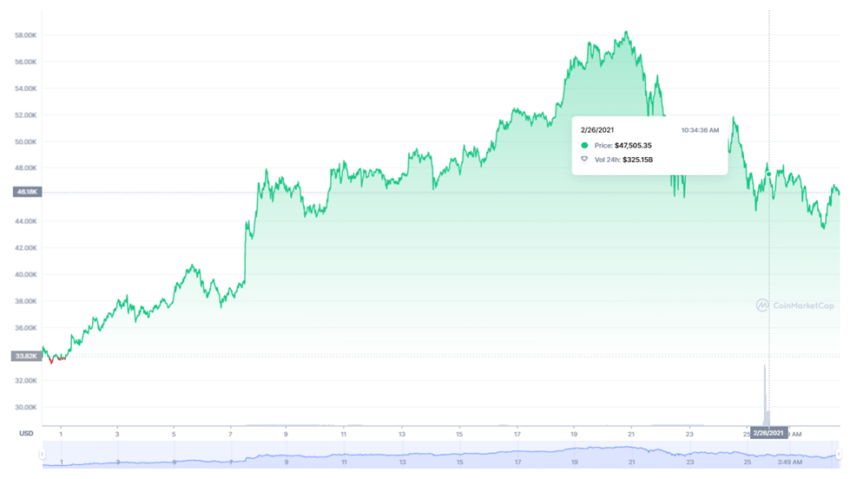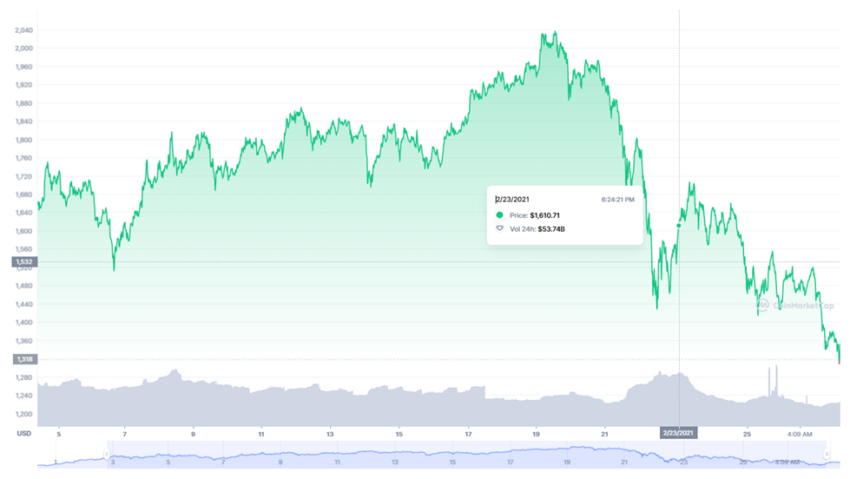Binance, the largest cryptocurrency exchange by daily trading volume, saw a 15% decrease in liquidity from January 2022.
February proved to be a difficult month for the entire crypto finance space and particularly so for cryptocurrency exchanges. Binance recorded approximately $1.08 trillion in trading volume during the second month of 2022, according to Be[In]Crypto Research.
Although this figure may look great at first glance, the total volume of Binance for February was down by $192.4 billion from January’s total trading volume of $1.27 trillion.

Binance volume still decreasing from 2021
The decrease in volume over the last month could have effects on Binance’s position as the largest cryptocurrency exchange based on the accumulation of 24-hour volumes. This is because centralized exchanges such as Hotcoin Global, Mandala Exchange, CoinFLEX, OKX, HitBTC, TOKENCAN, Deepcoin, Upbit, IndoEx, and Coinbase are hot on their heels.
Binance experienced a year-on-year decrease of 22% for February 2022. The total trading volume for February 2021 was $1.38 trillion.
Binance recorded an all-time high monthly volume of $3.11 trillion in May 2021 and closed out the final month of the year by recording a total trading volume of $1.44 trillion. Volume for February 2022 was down 65% and 25% from May and December 2021 respectively.

Negative crypto market sentiment
For the purposes of understanding, let us consider the two largest digital assets as a thesis that best explains the dip in volume.
When Binance reached its all-time high in volume back in May 2021, there was a massive positive crypto market sentiment. Ethereum crossed $4,000 for the first time that month and Bitcoin was trading above $50,000.
At the time, the minimum daily trading volume Ethereum (ETH) recorded was $25 billion and the maximum daily trading volume was $84 billion. The minimum trading volume for Bitcoin (BTC) was $31 billion and the maximum hovered around $135 billion.

Due to the buzz around the crypto finance space, millions of sophisticated (highly-informed) and unsophisticated traders (make decisions without the backing of fundamental and technical analysis) poured billions of dollars into BTC, ETH, and other altcoins on Binance.
Before the then all-time highs of May, the minimum volume recorded for Bitcoin in February 2021 was $45 billion and the maximum was $350 billion. The minimum volume recorded for Bitcoin in February 2022 was $13 billion and the maximum was $47 billion, a 71% decrease from 2022’s minimum, and 86% from 2022’s maximum.

The minimum volume recorded for Ethereum in February 2021 was $20 billion and the maximum was $48 billion. The minimum volume recorded for Ethereum in February 2022 was $9 billion and the maximum was $29 billion, a decrease of 55% in 2022’s minimum, and a 39% dip in 2022’s maximum.

February 2021 was an exciting time for the crypto finance space. Ethereum surpassed the $2,000 price milestone for the first time and eventually settled at an intraday high of $2,036.29 on Feb. 20. Bitcoin also surpassed $50,000 for the first time on Feb. 16, and eventually reached a high of $58,330.57 on Feb. 21.
Some of the most popular trading pairs on Binance in February 2021 were ETH/USD and BTC/USD. With approximately 1,624 trading pairs on Binance as of February 2022, the most popular were comprised of ETH/USDT and BTC/USDT.
Increasing number of exchanges
According to Be[In]Crypto Research, there are more than 450 cryptocurrency exchanges as of March 2022. More than 25 of these exchanges record at least $1 billion in daily volume. In addition to this, they continue to add support for new assets and trading pairs.
Binance continues to thrive on the level of sophistication of its trading platform and relatively smooth verification process to maintain customers. This is because most exchanges support the same pairs that Binance has on their own platform as well as products such as staking that brings forth decent annual percentage yields.
With hundreds of exchanges available, it should be easy for a customer having know-your-customer (KYC) issues to move from Binance onto a multitude of other exchanges.
Regulatory roadblocks
To this day, Binance continues to face regulatory problems. In 2021, the exchange was banned by the Financial Conduct Authority (FCA) in the United Kingdom and roadblocks in Canada as well, after claims of scams and using privacy coins to launder money.
Should Binance overcome its regulatory problems, the exchange could be seeing a huge influx of liquidity that could potentially take its volume back to the highs of May 2021.
Disclaimer
In line with the Trust Project guidelines, this price analysis article is for informational purposes only and should not be considered financial or investment advice. BeInCrypto is committed to accurate, unbiased reporting, but market conditions are subject to change without notice. Always conduct your own research and consult with a professional before making any financial decisions. Please note that our Terms and Conditions, Privacy Policy, and Disclaimers have been updated.


